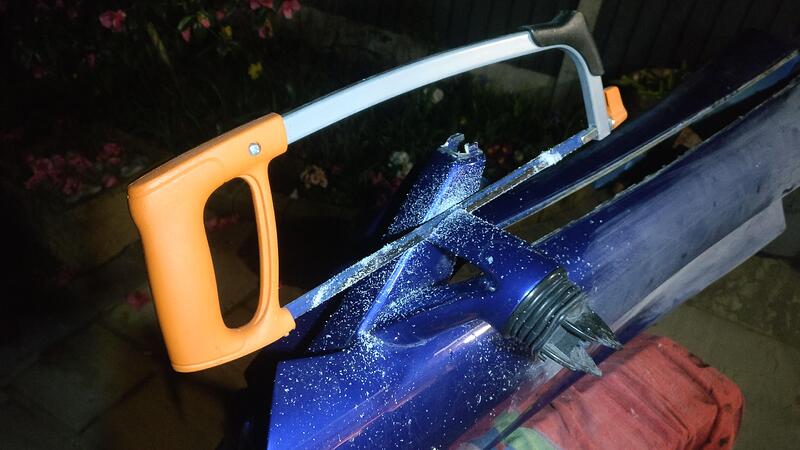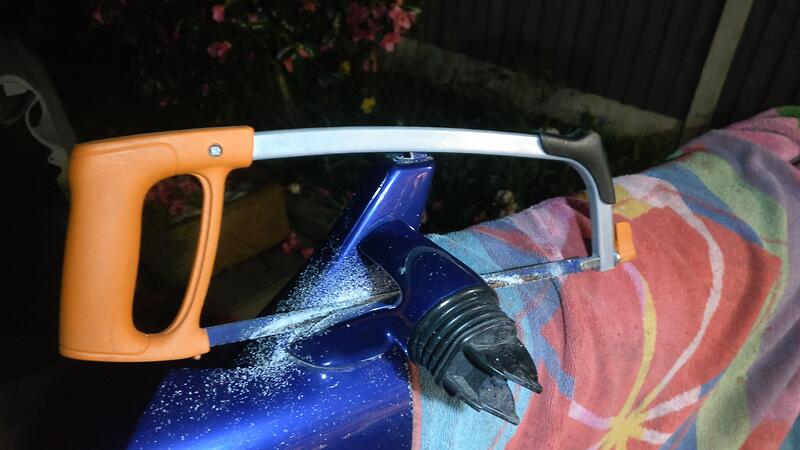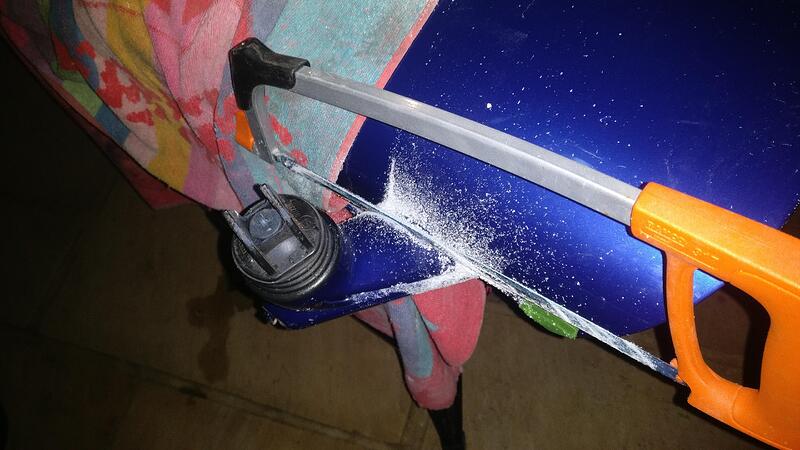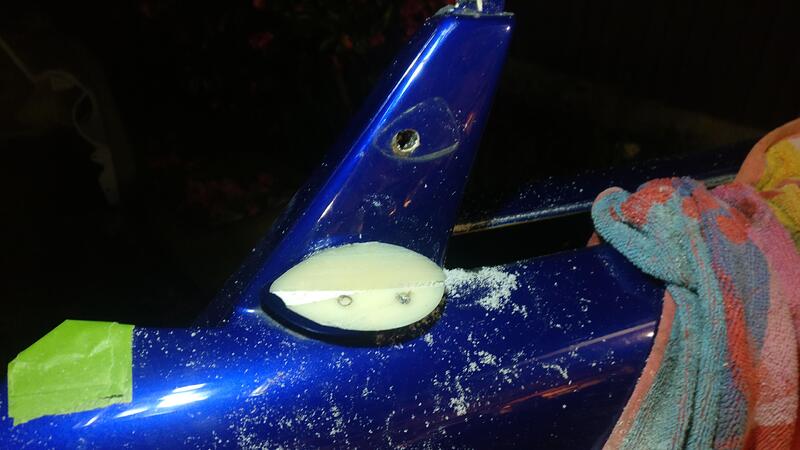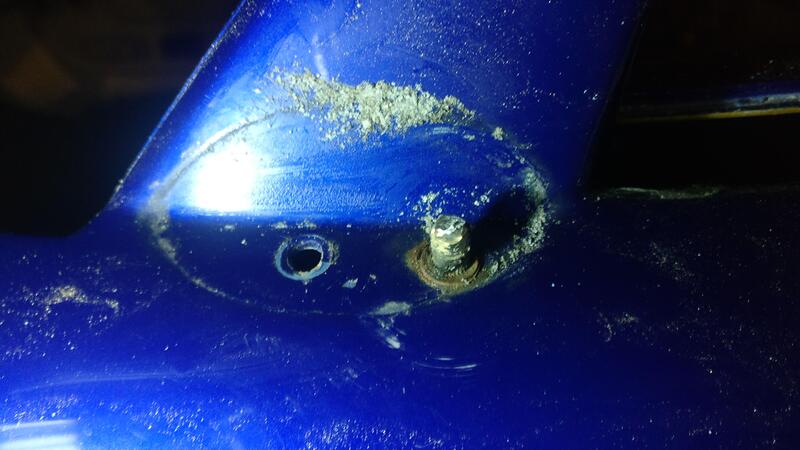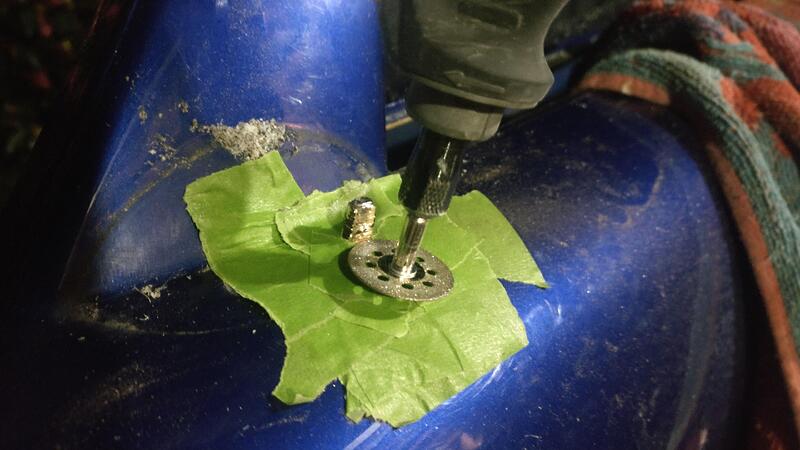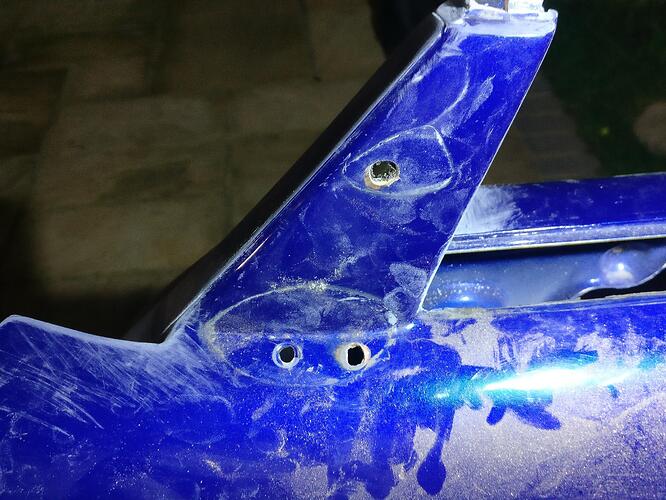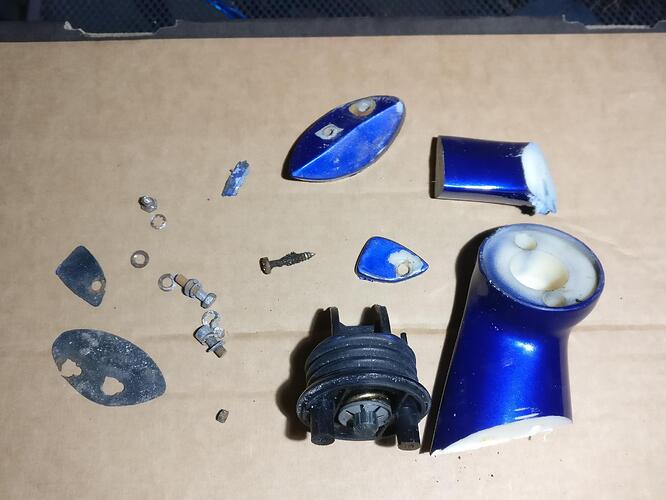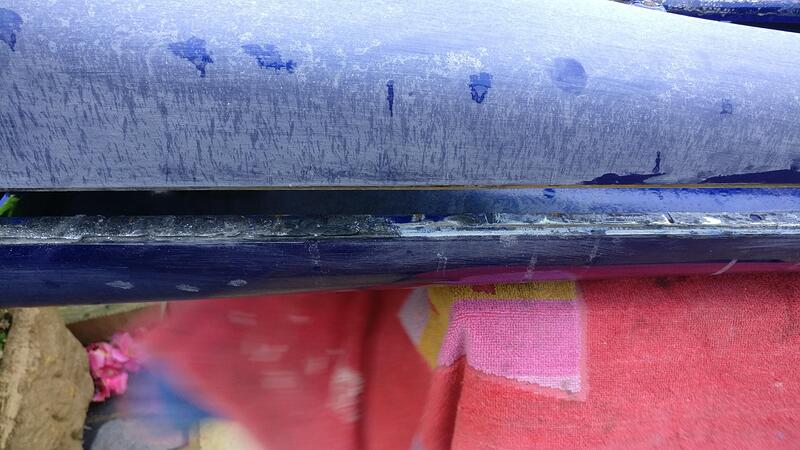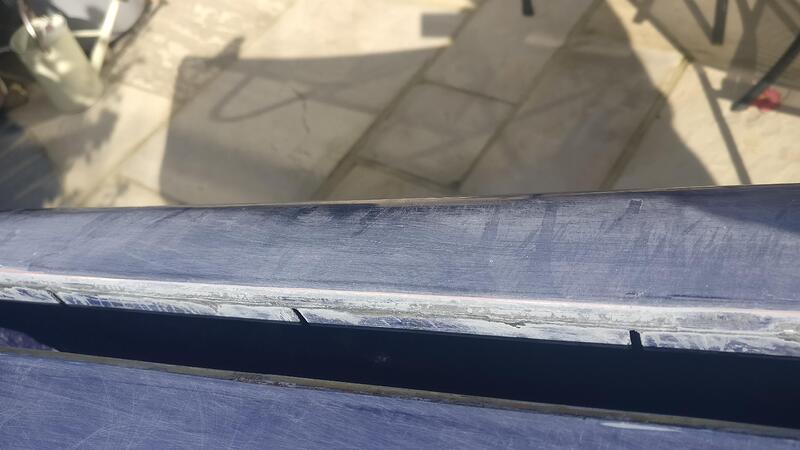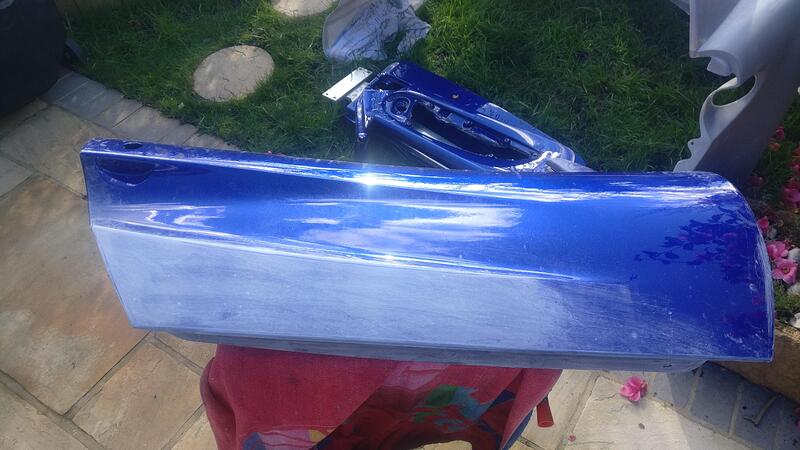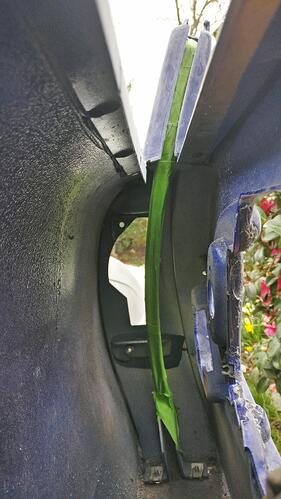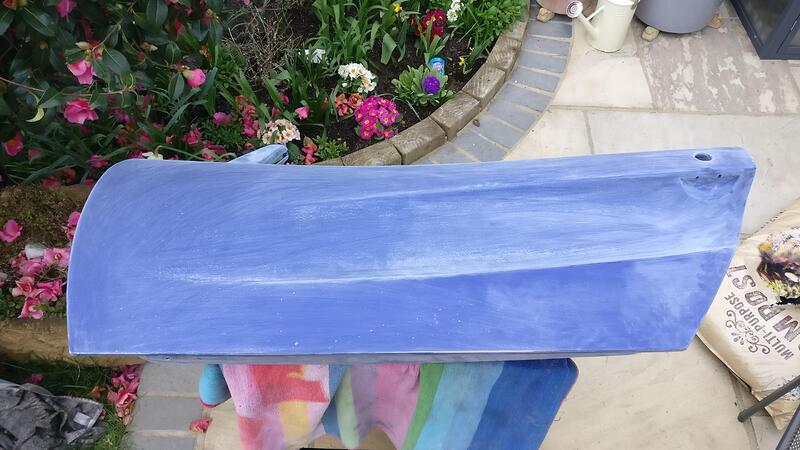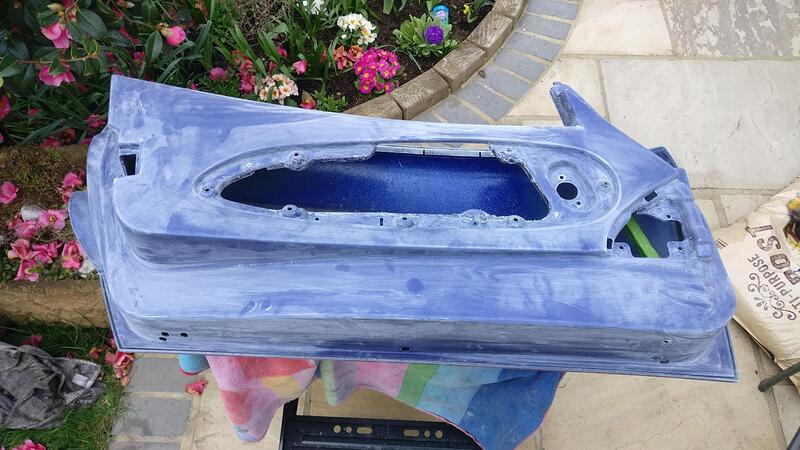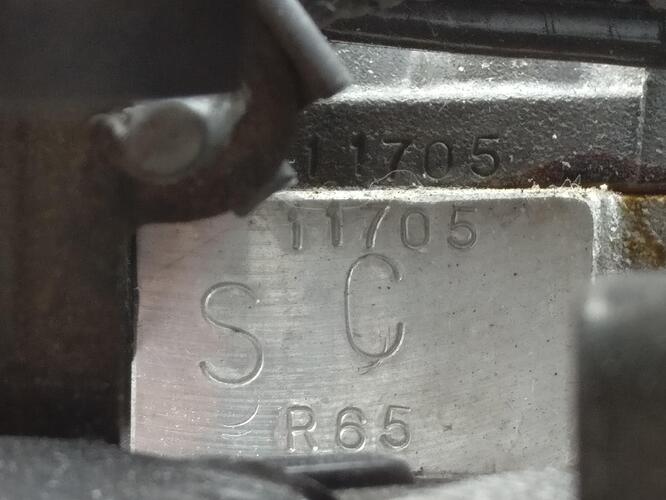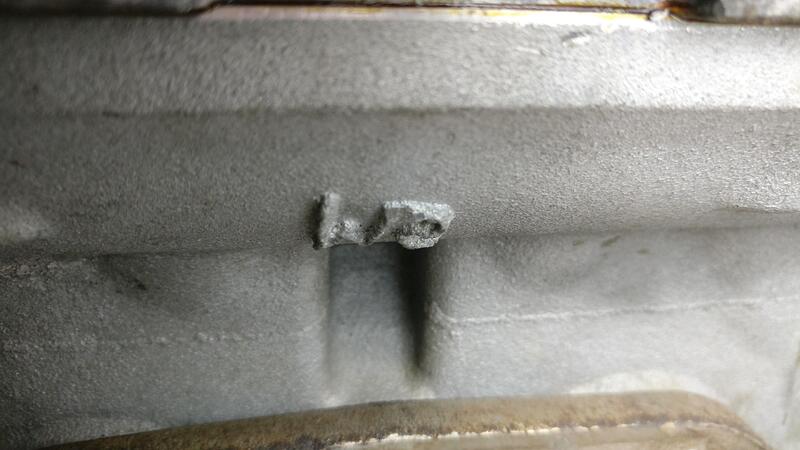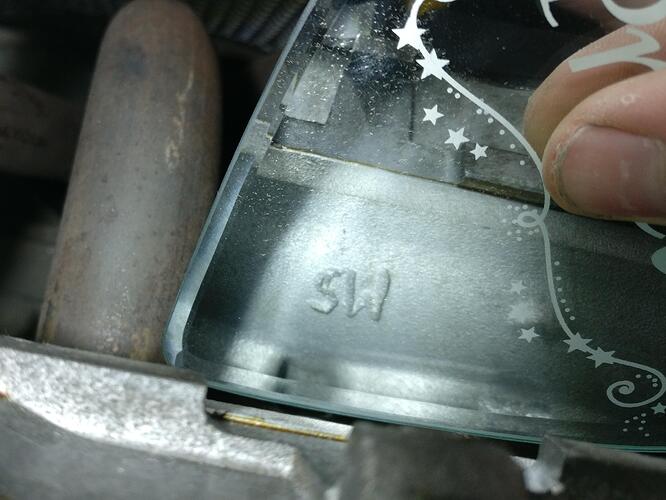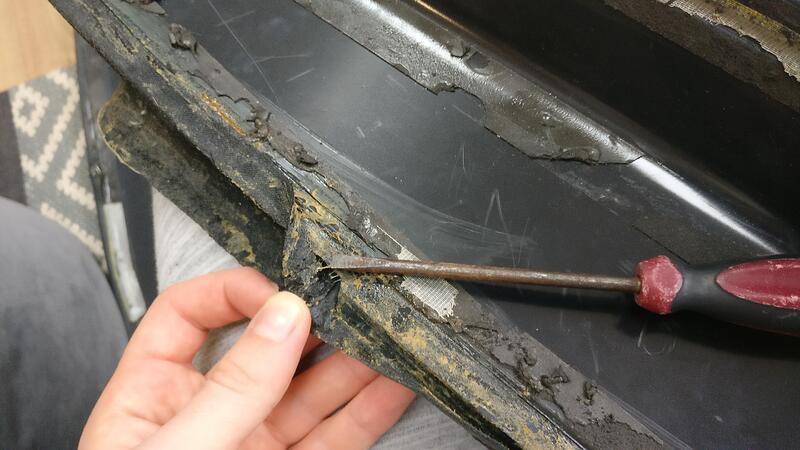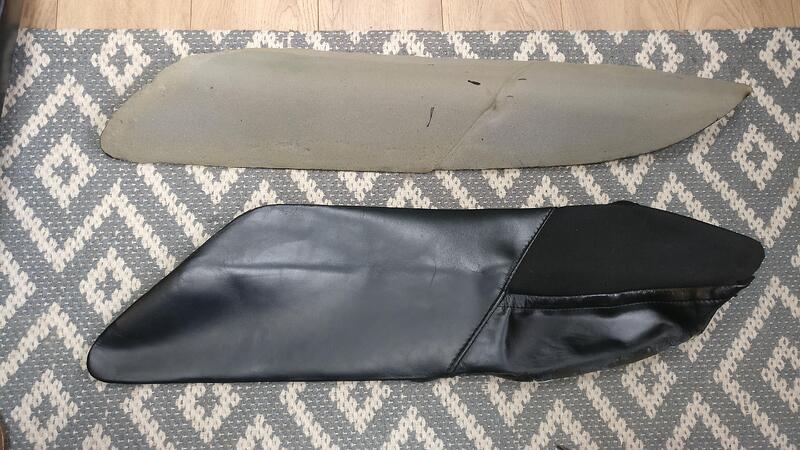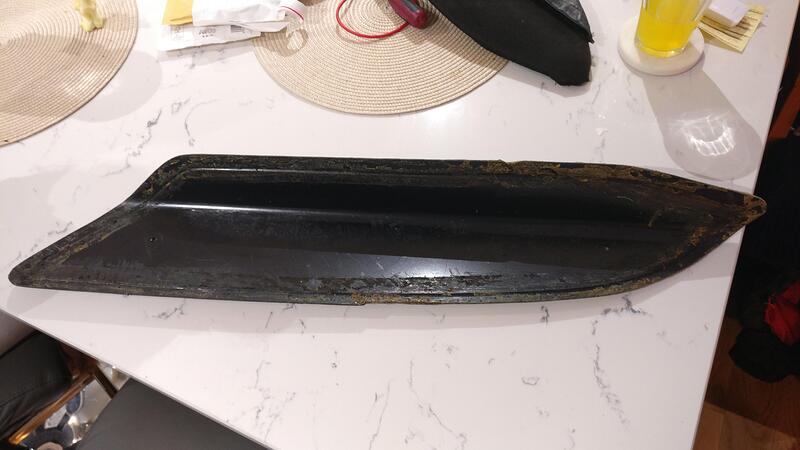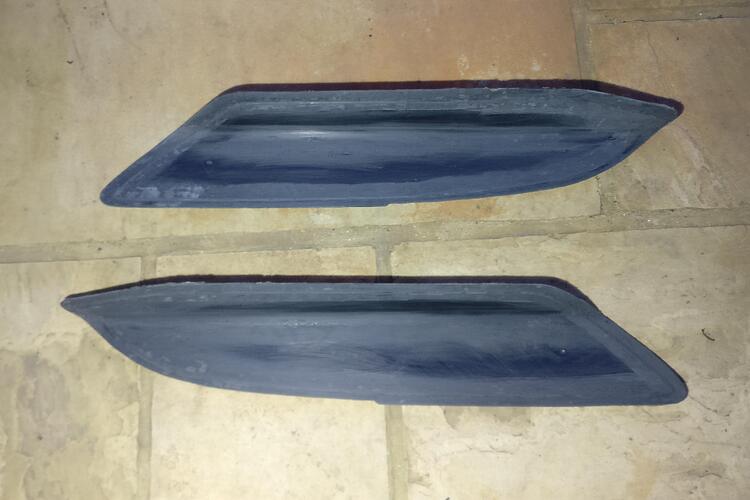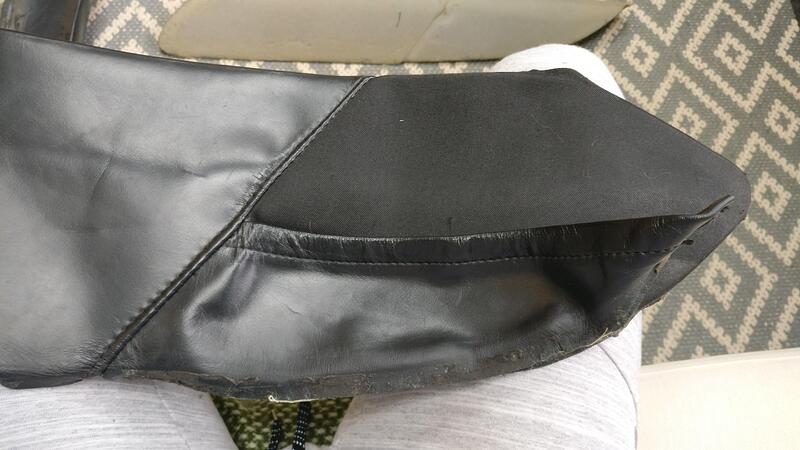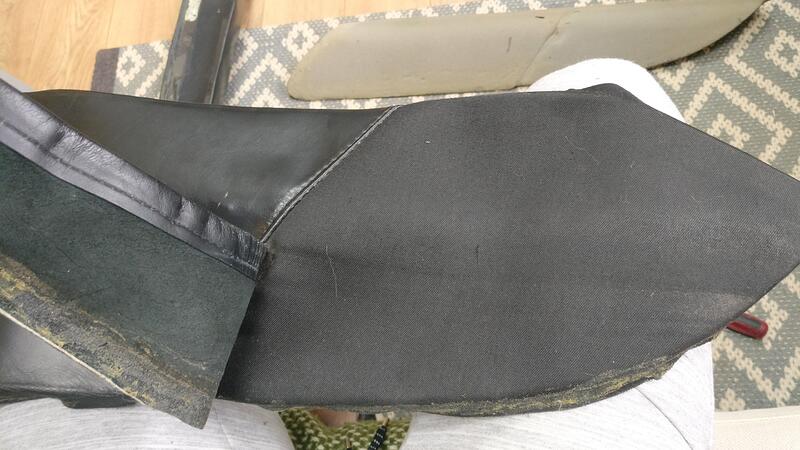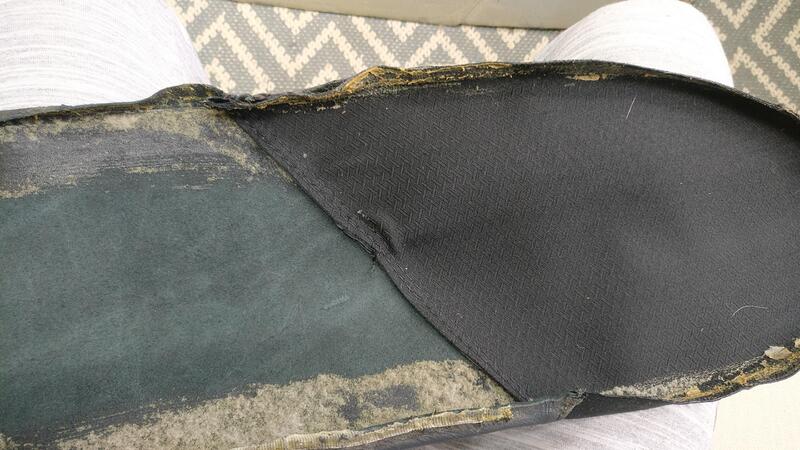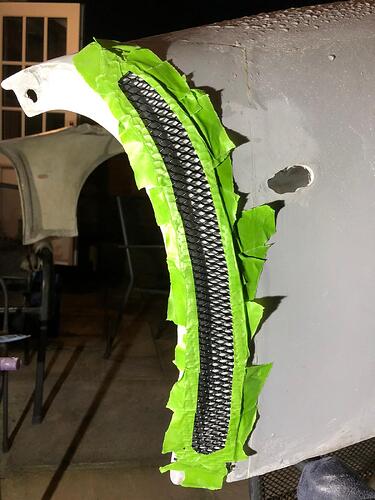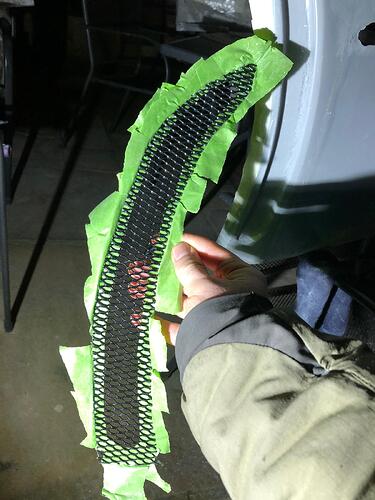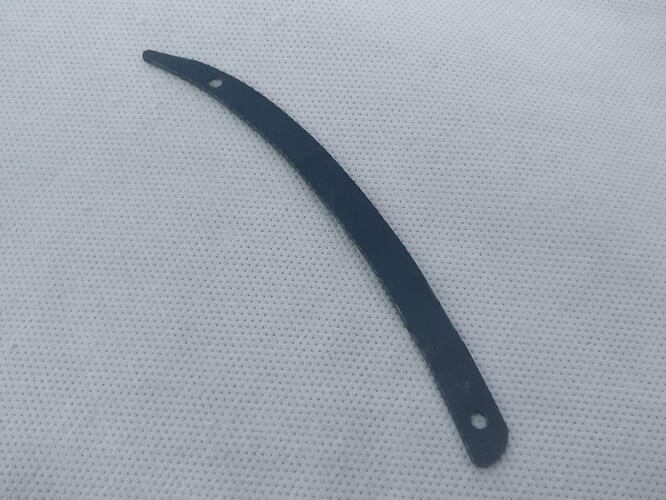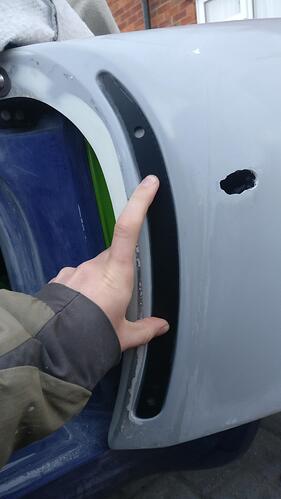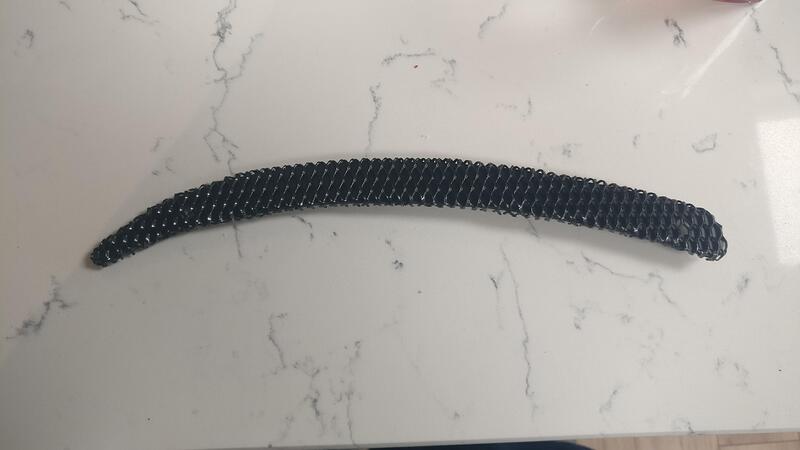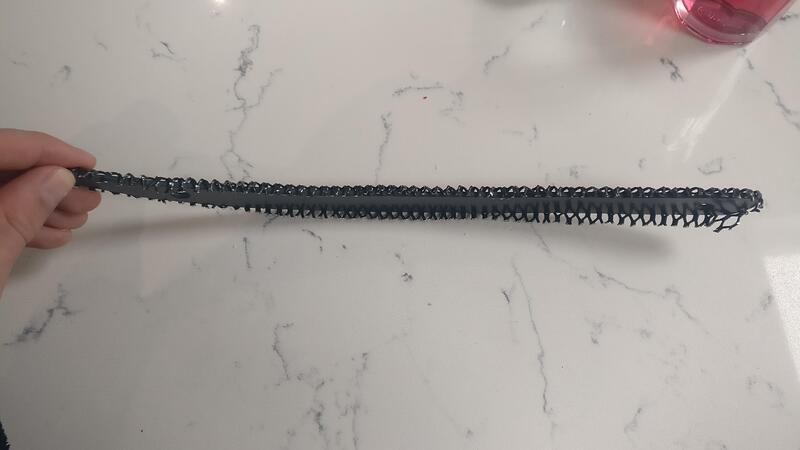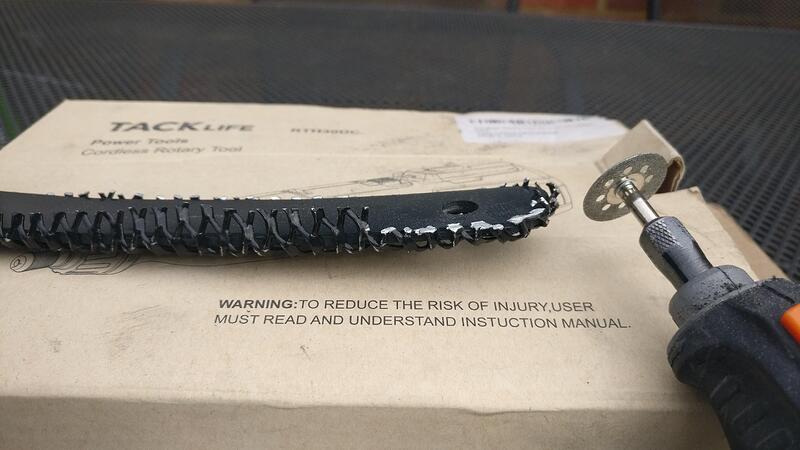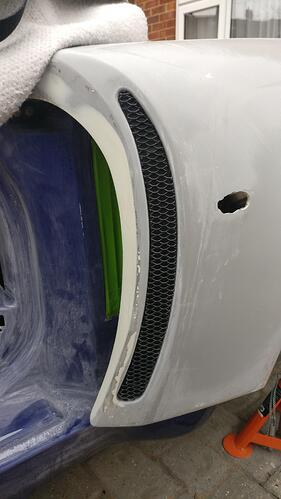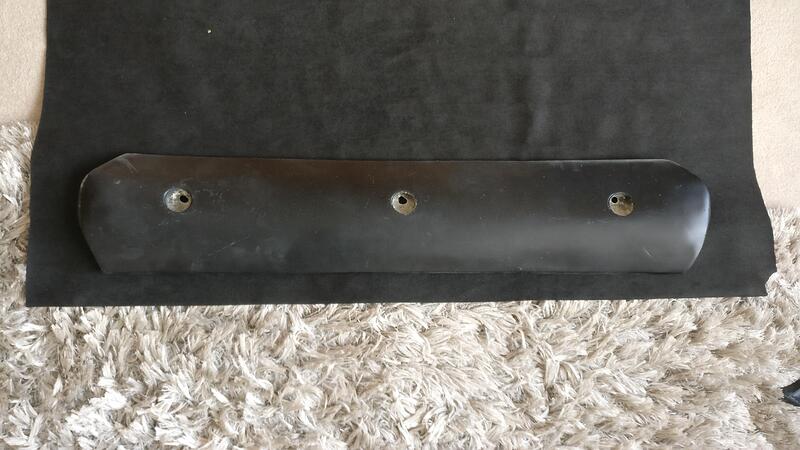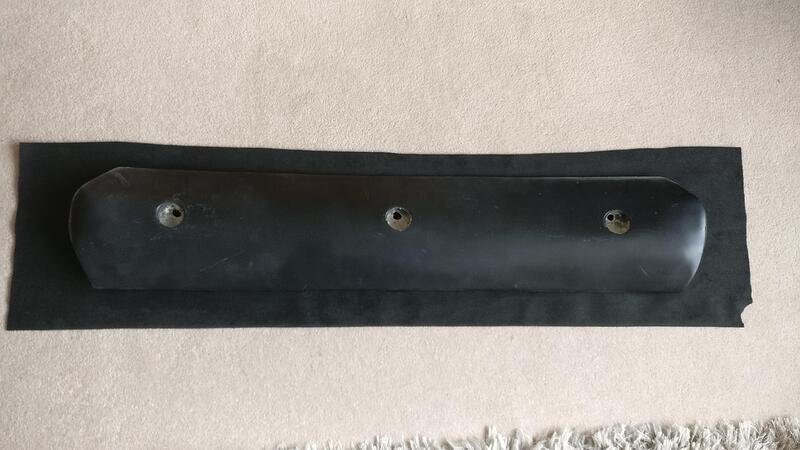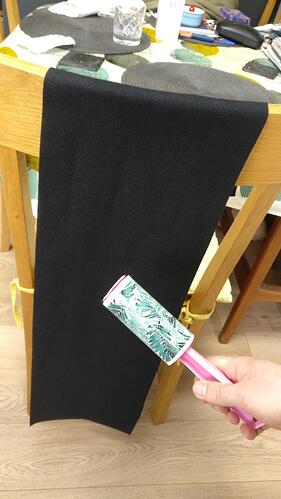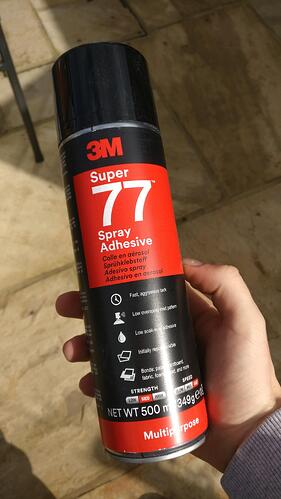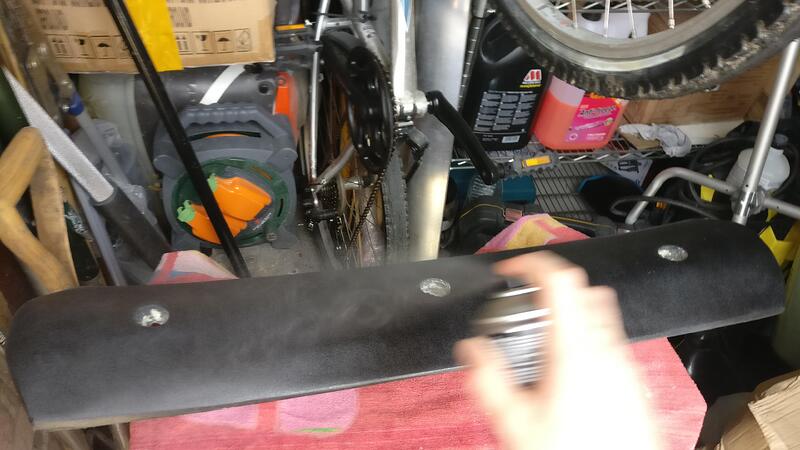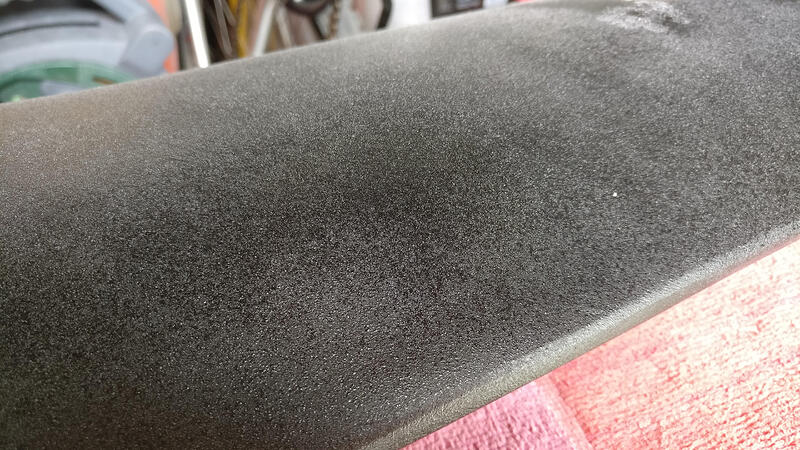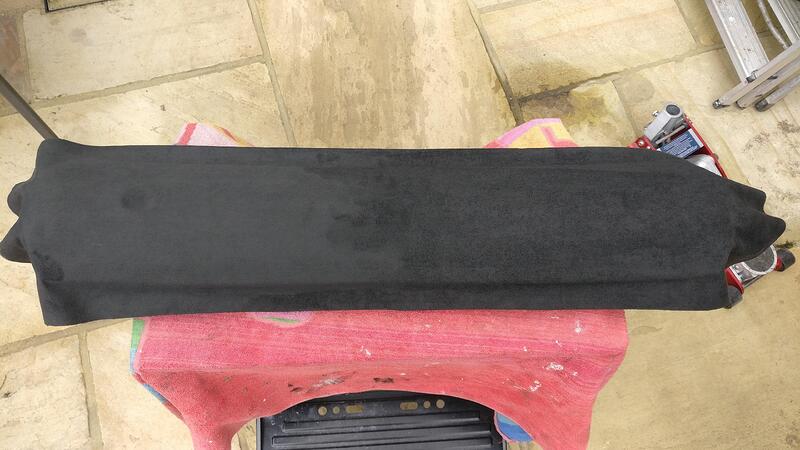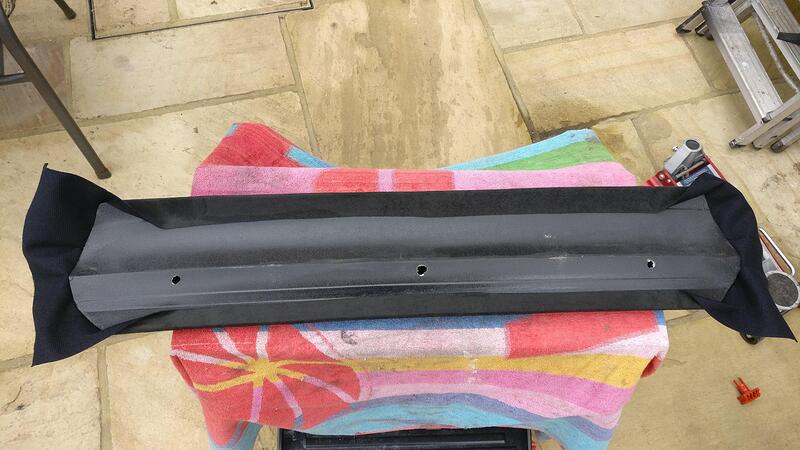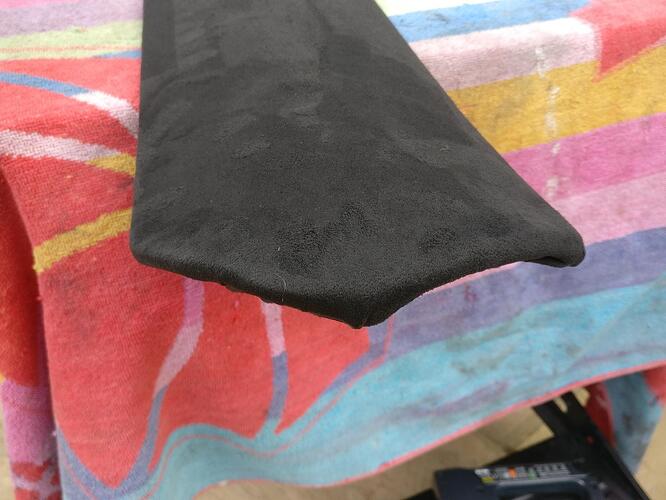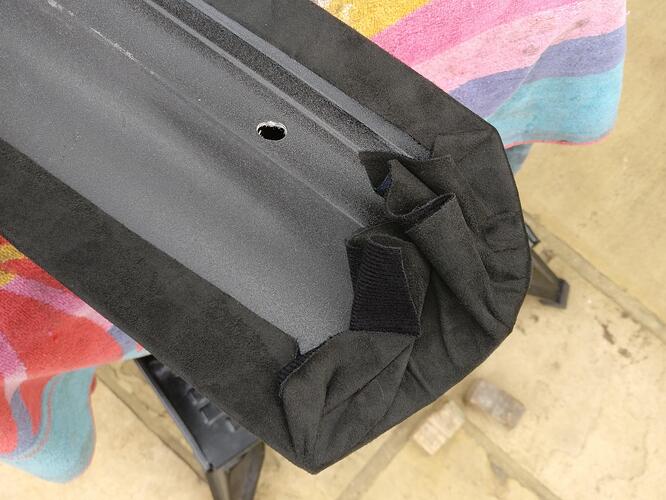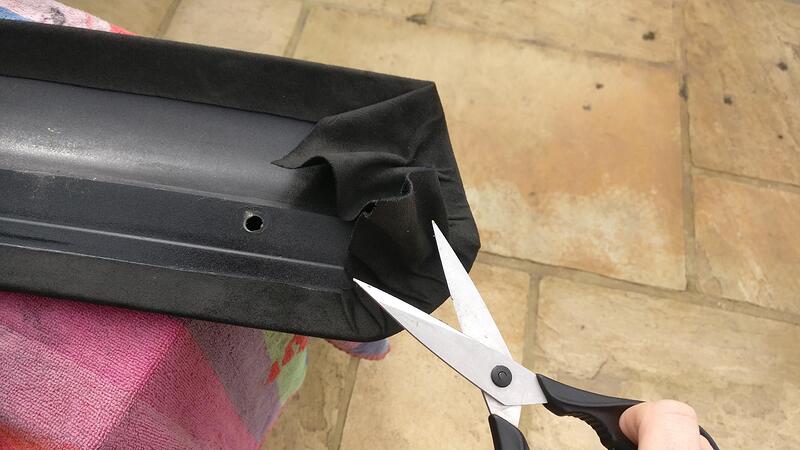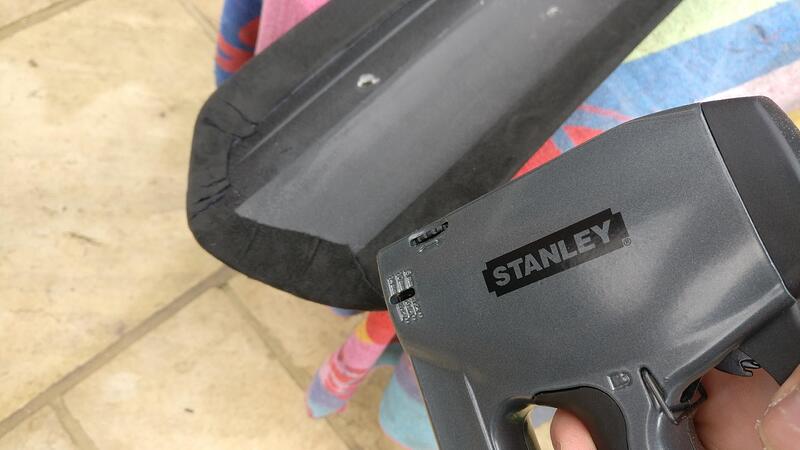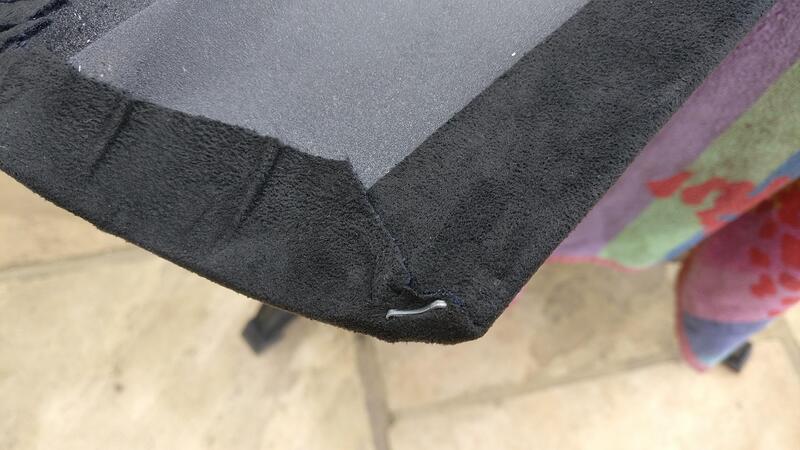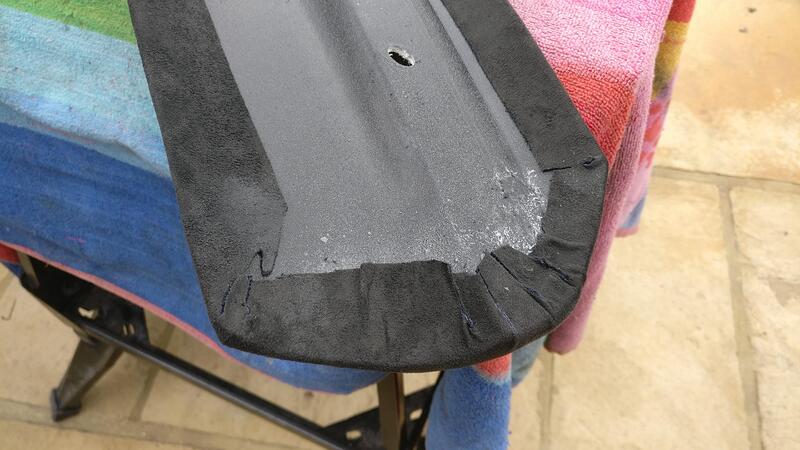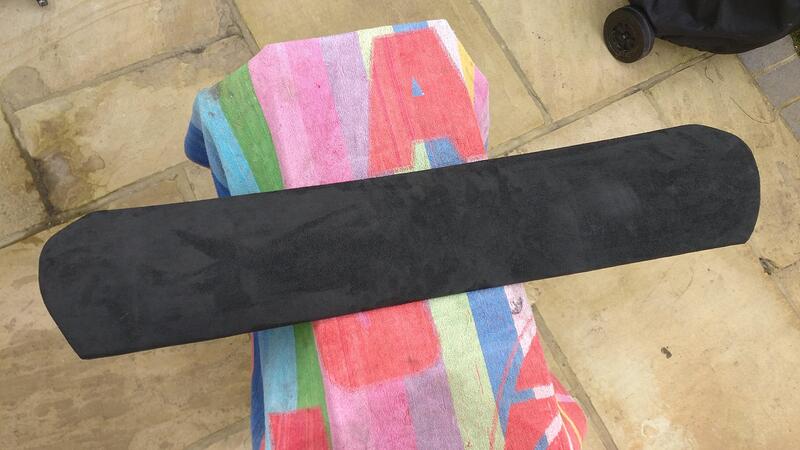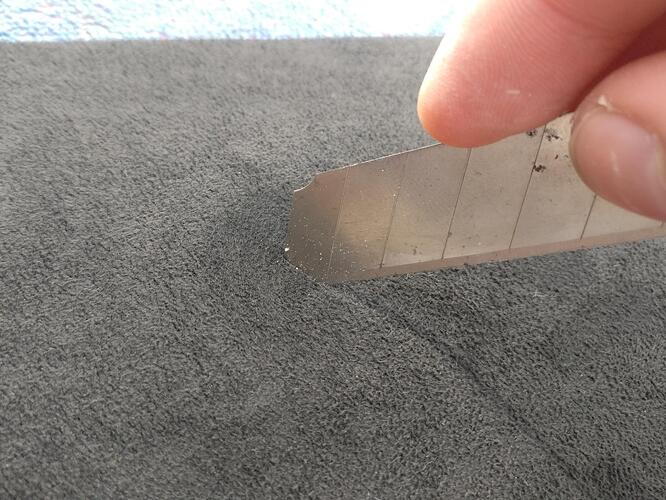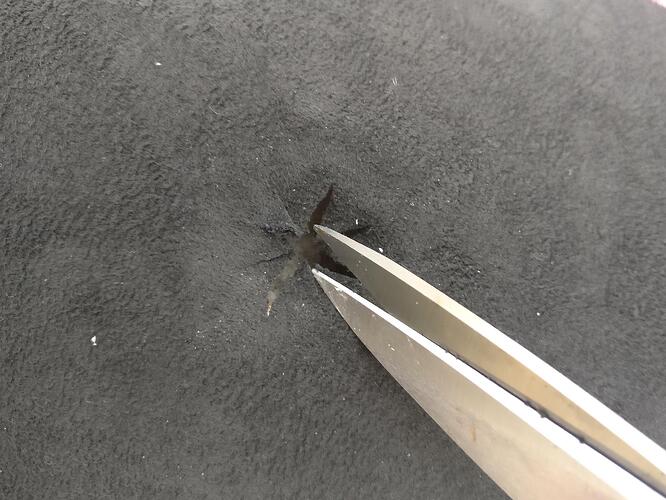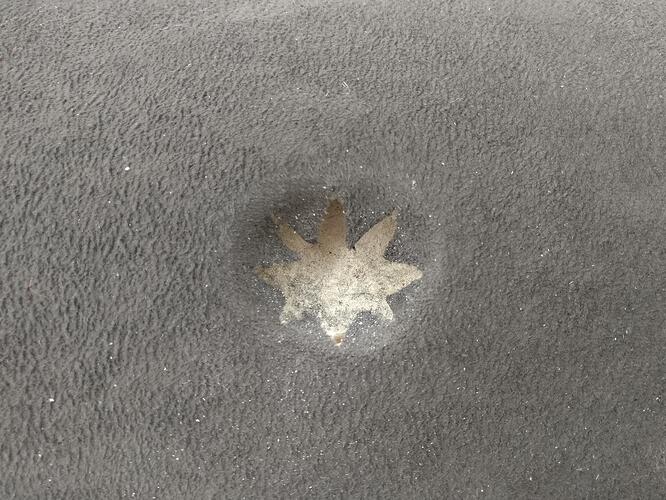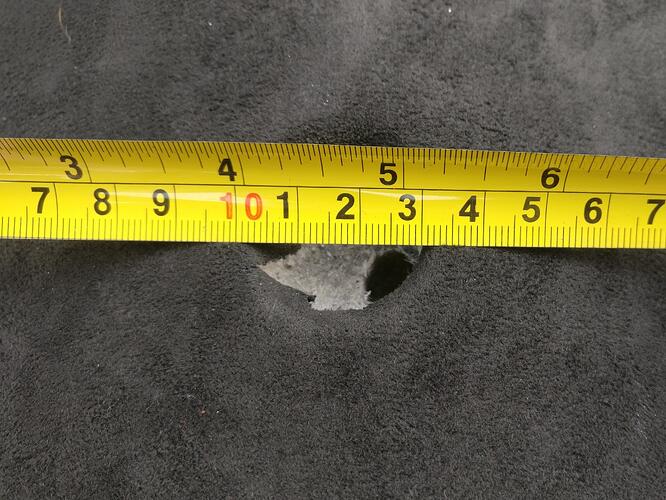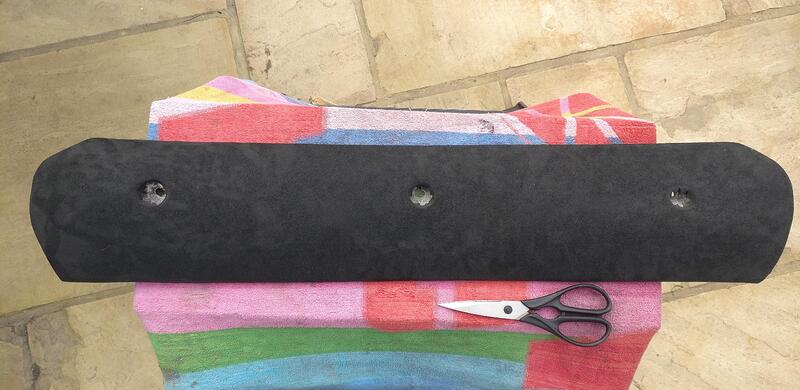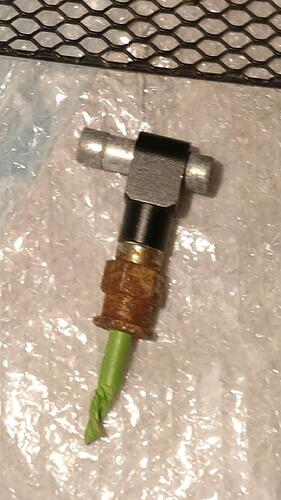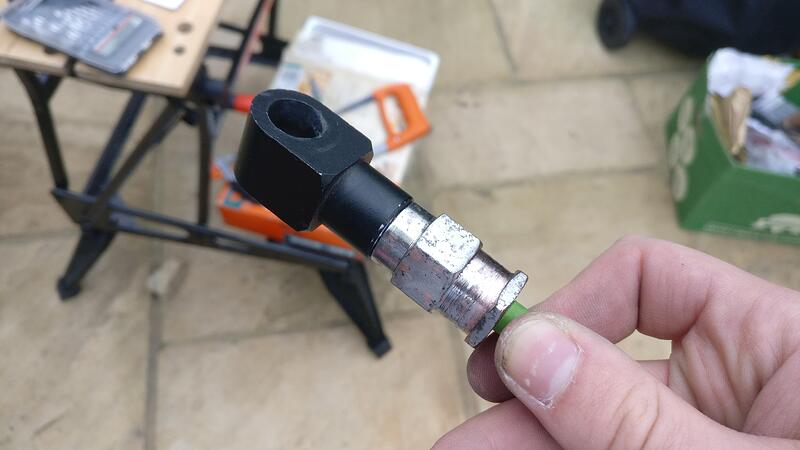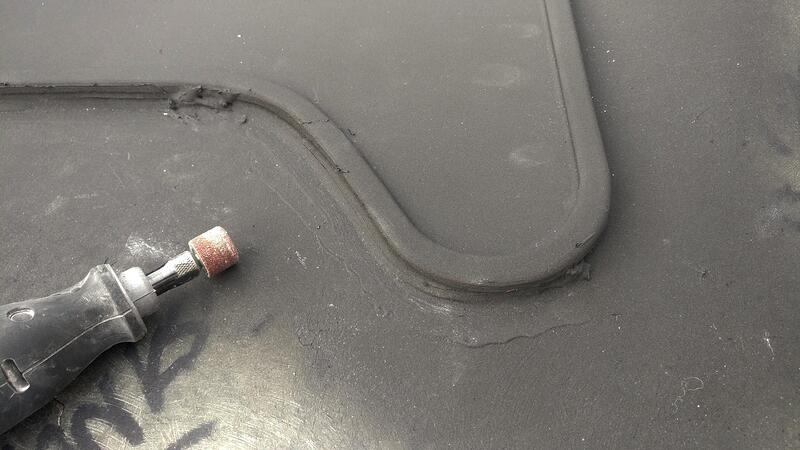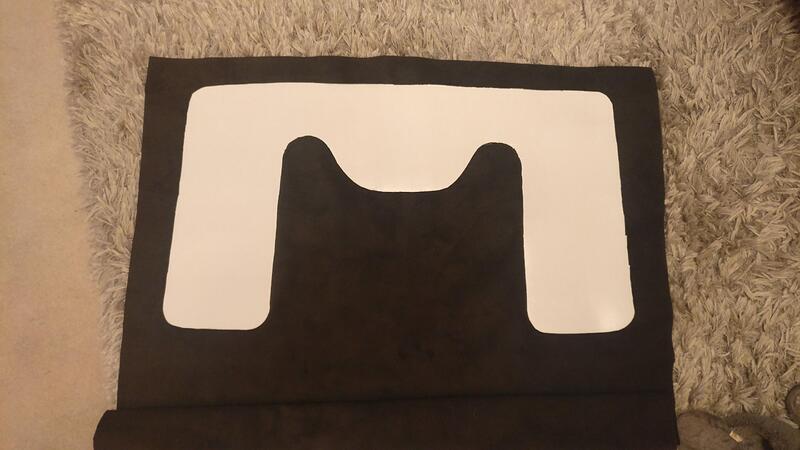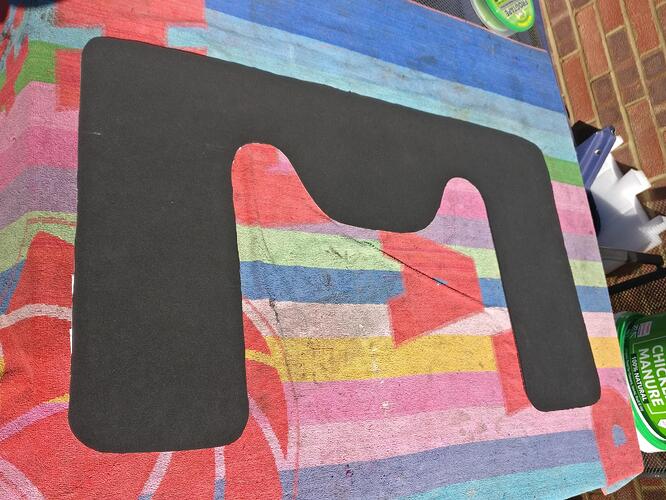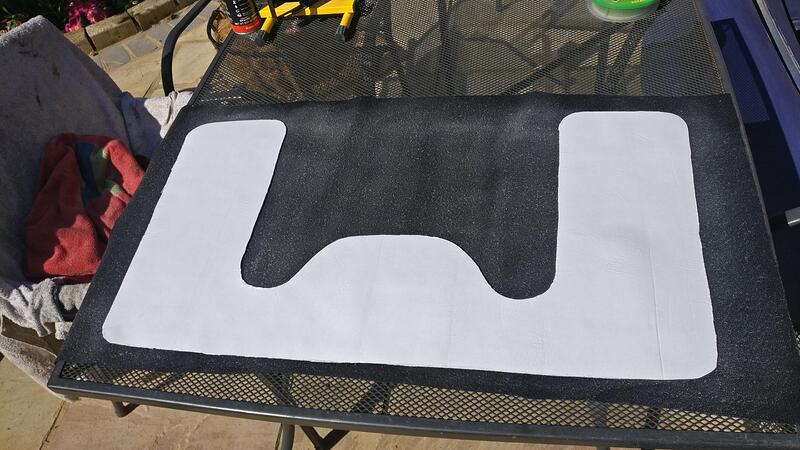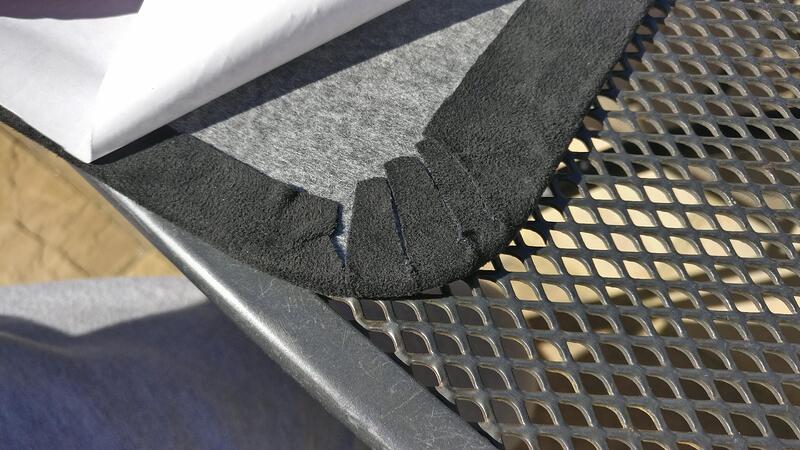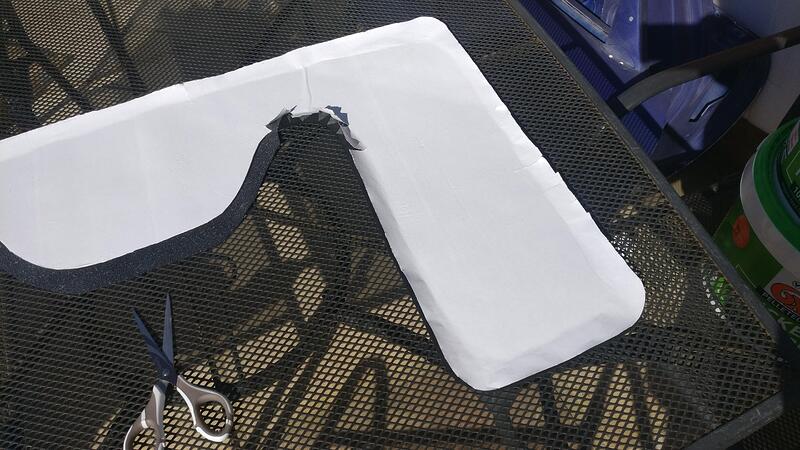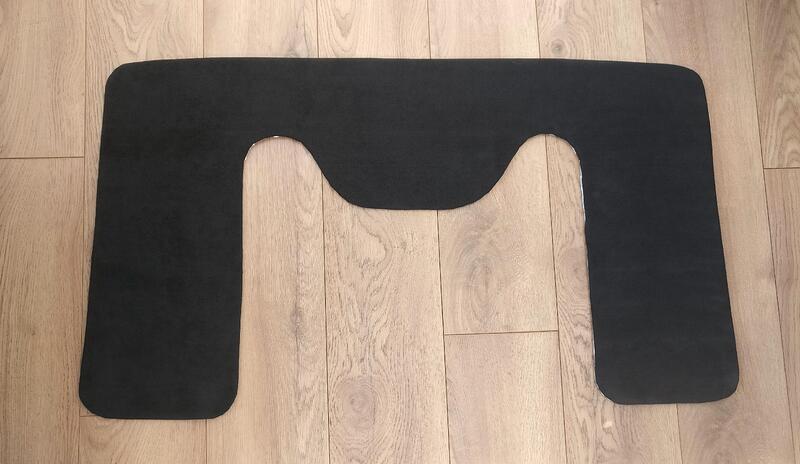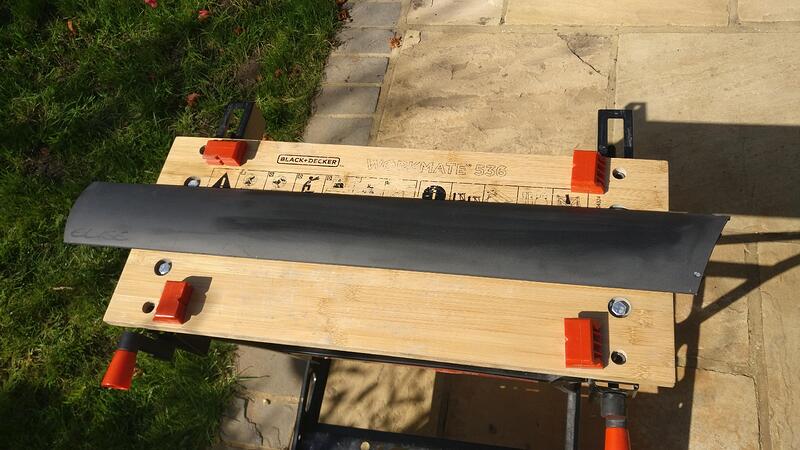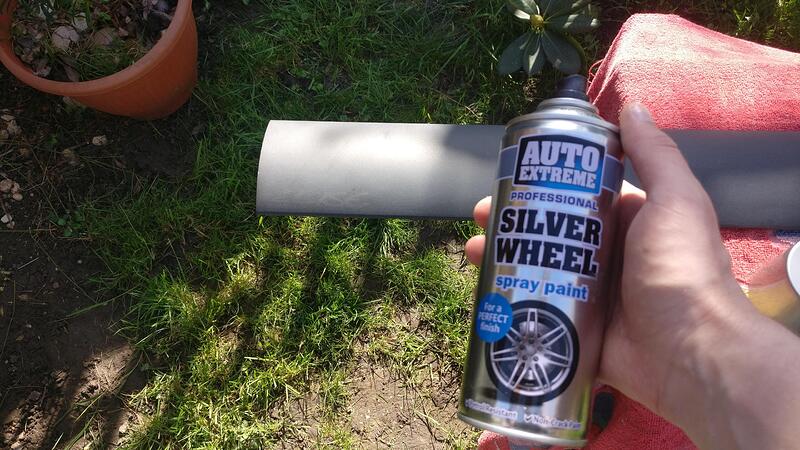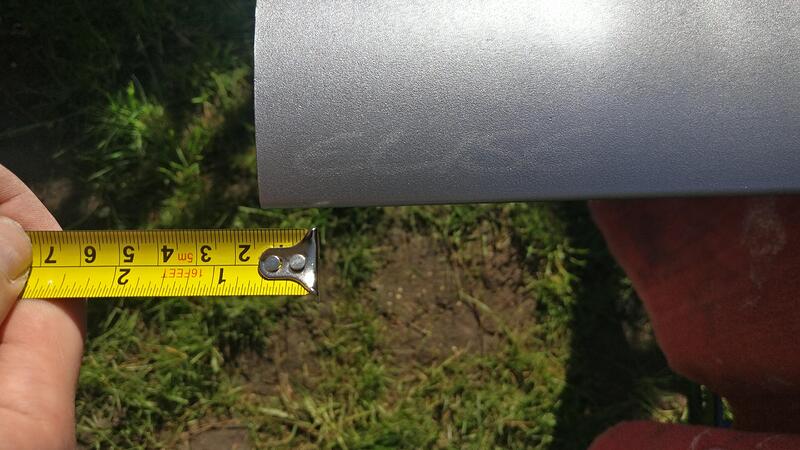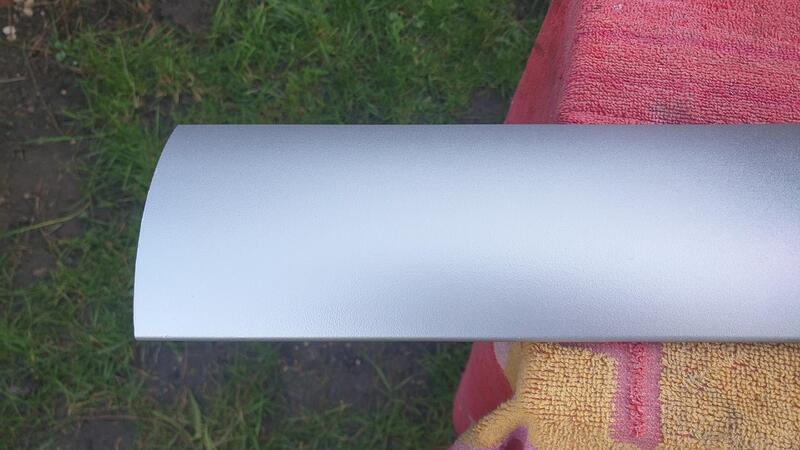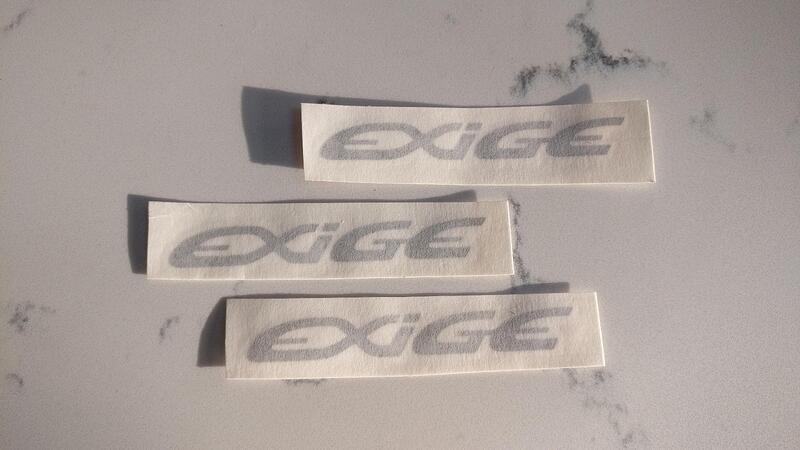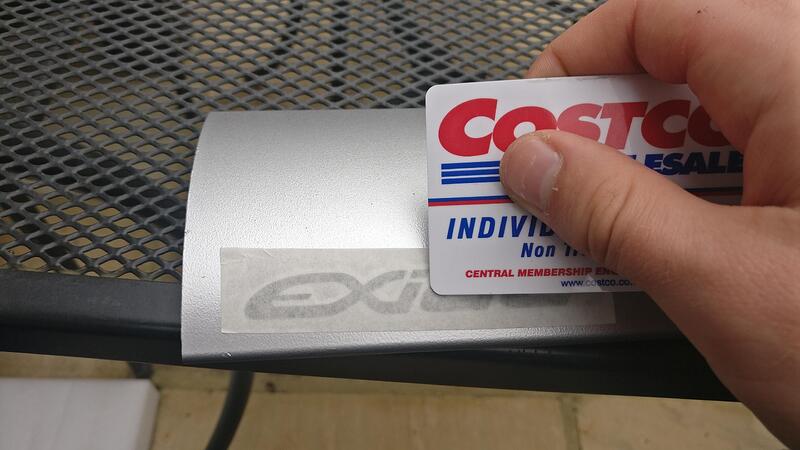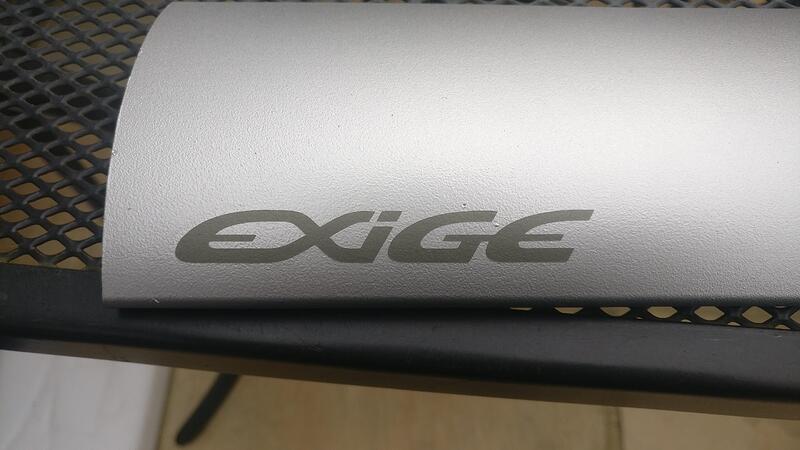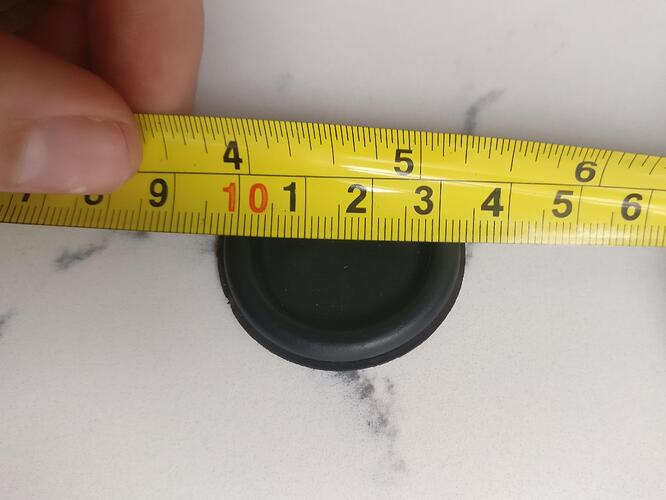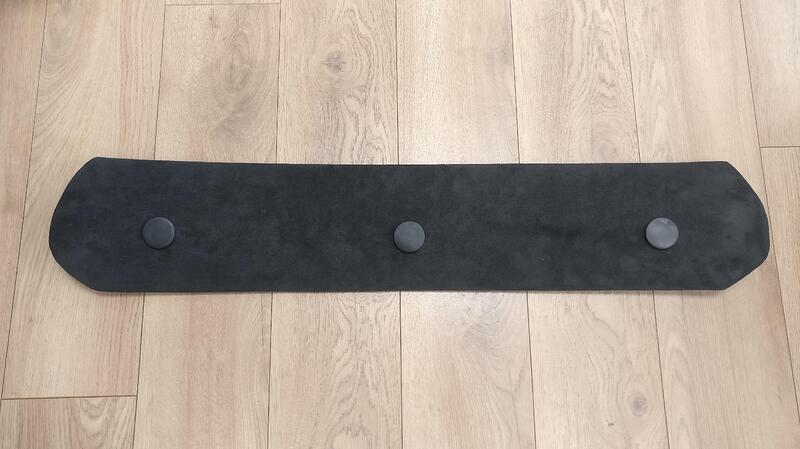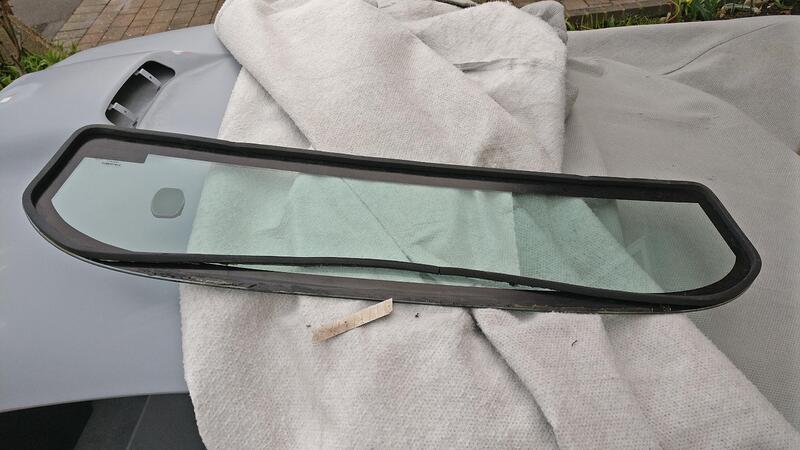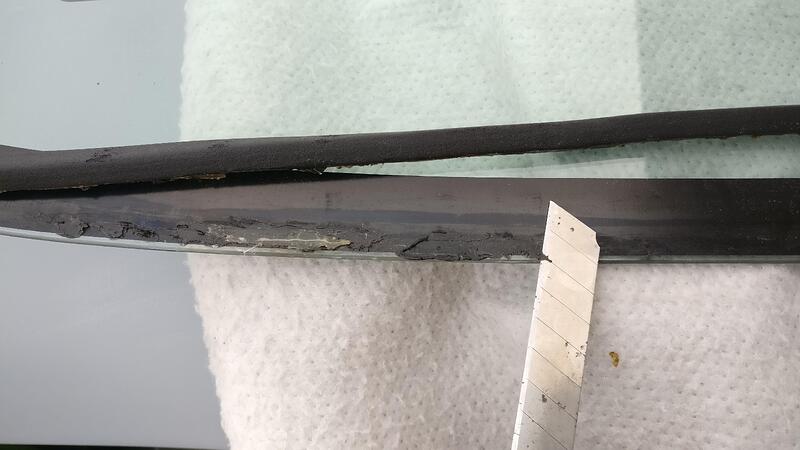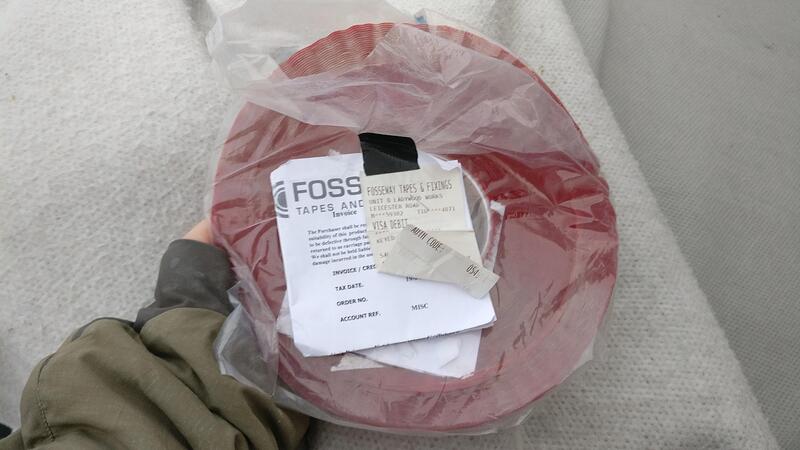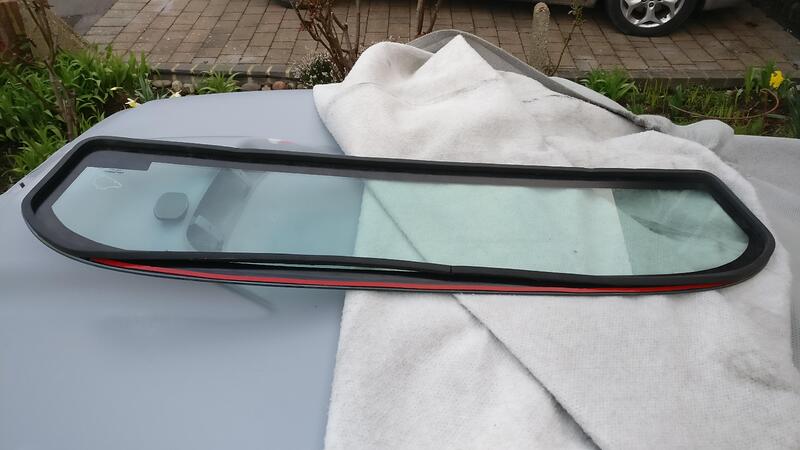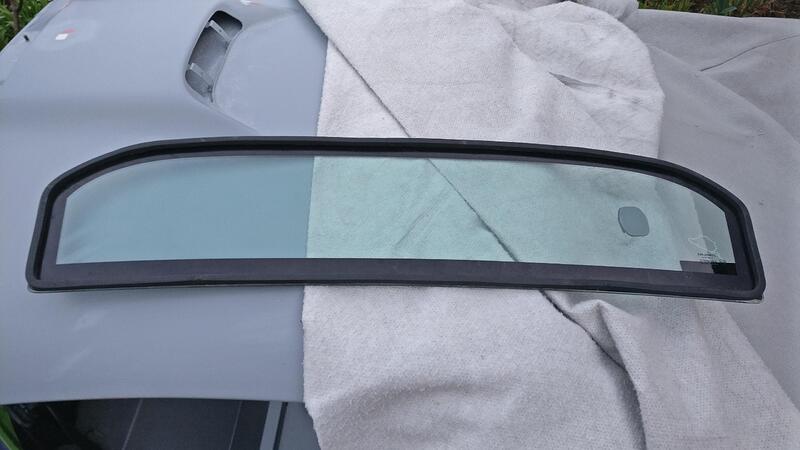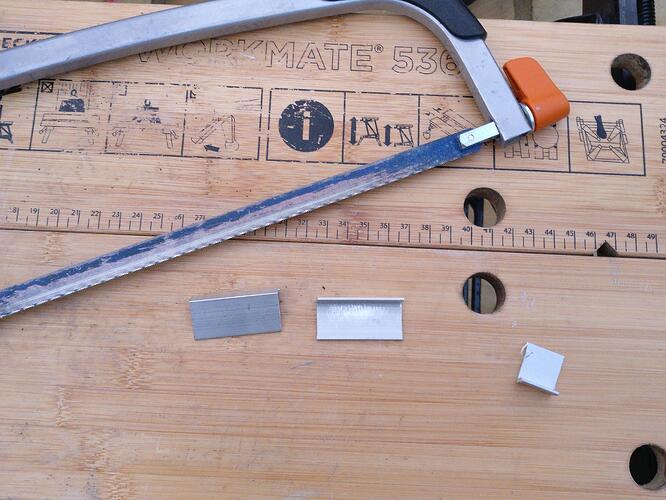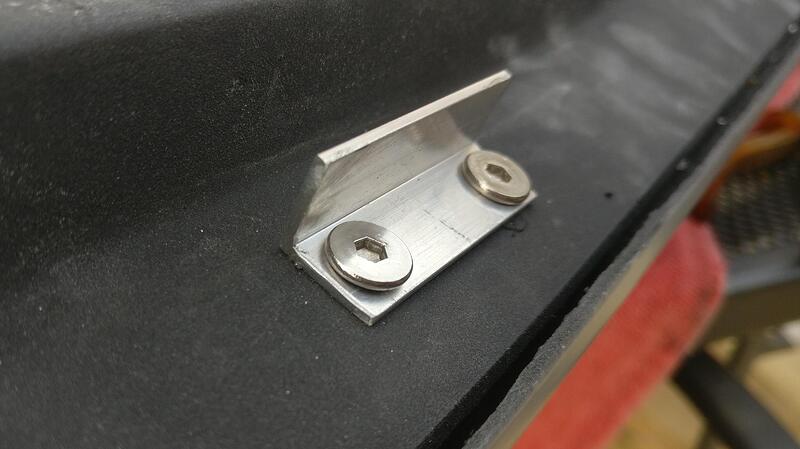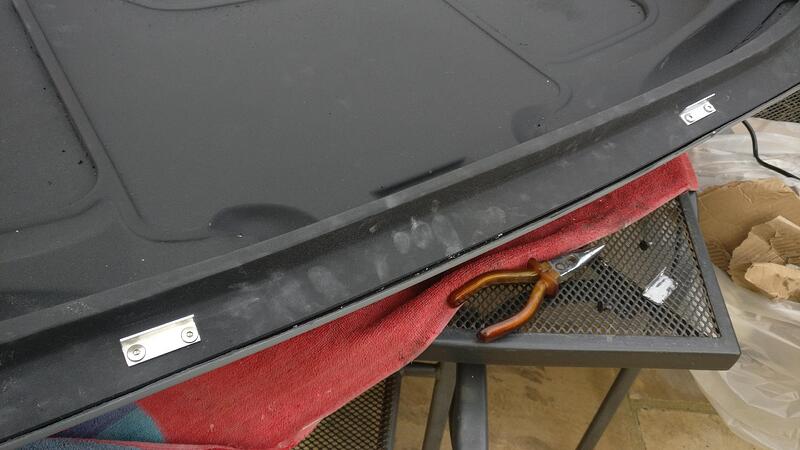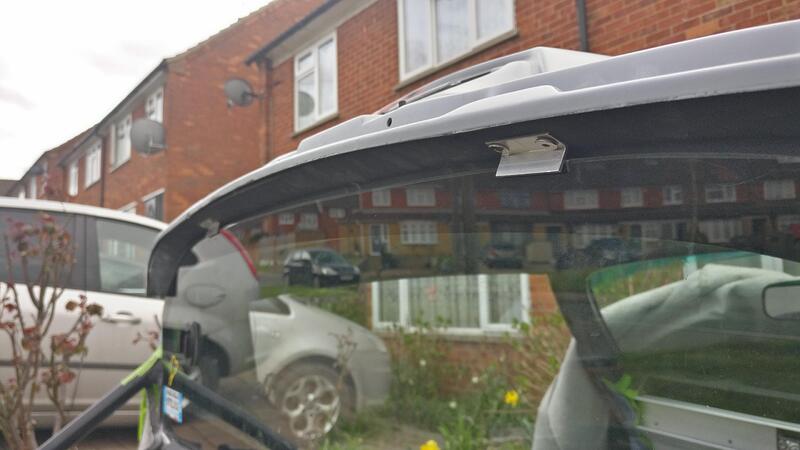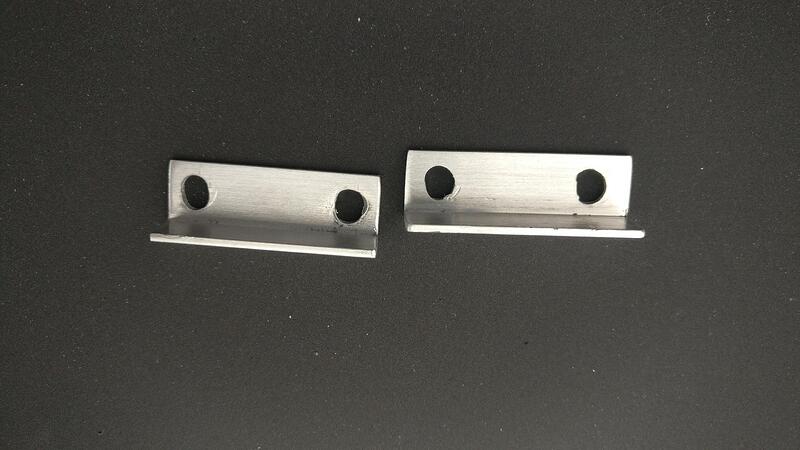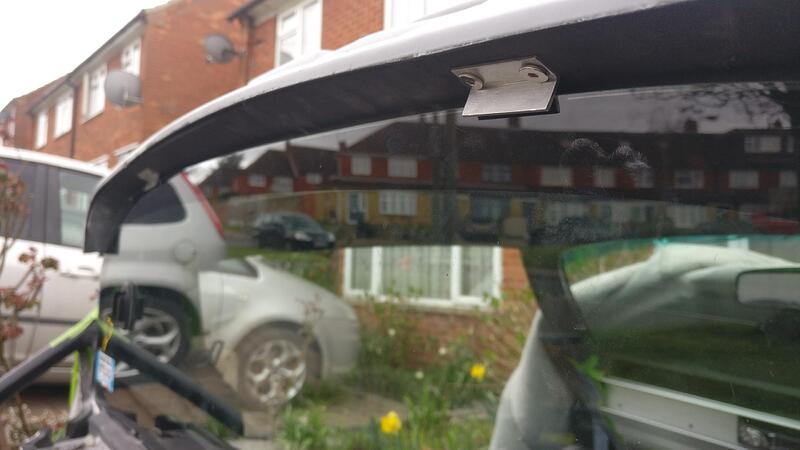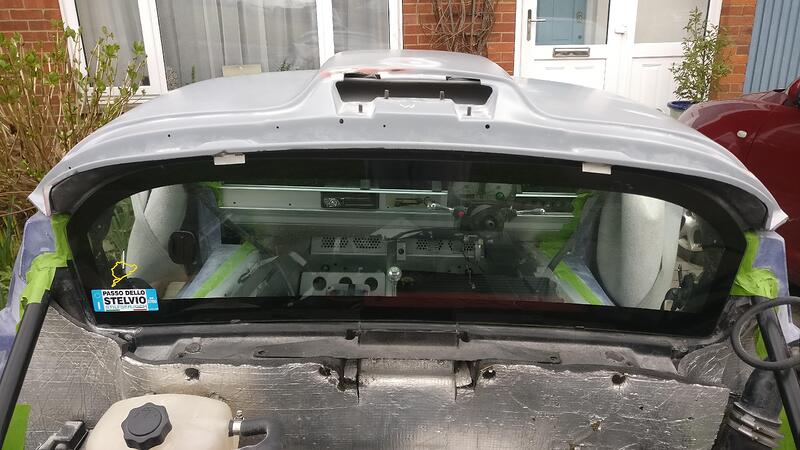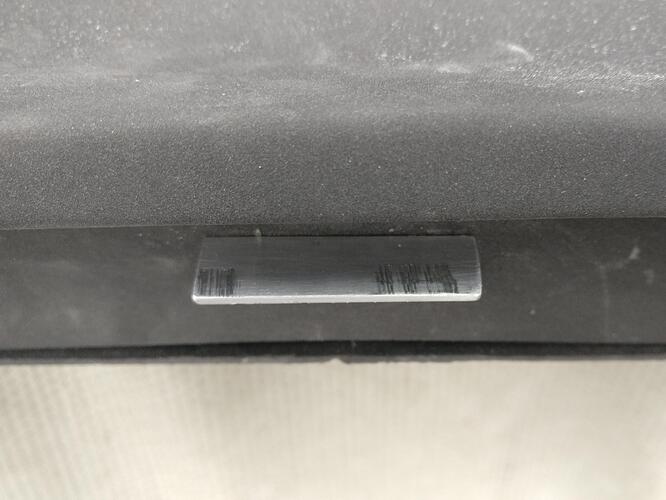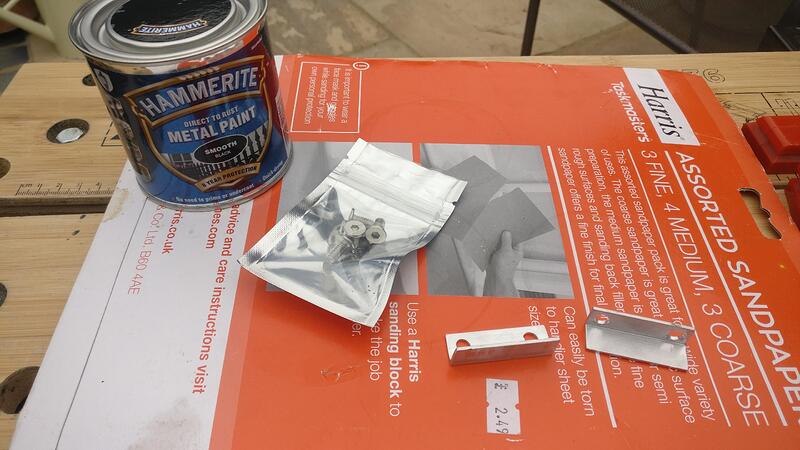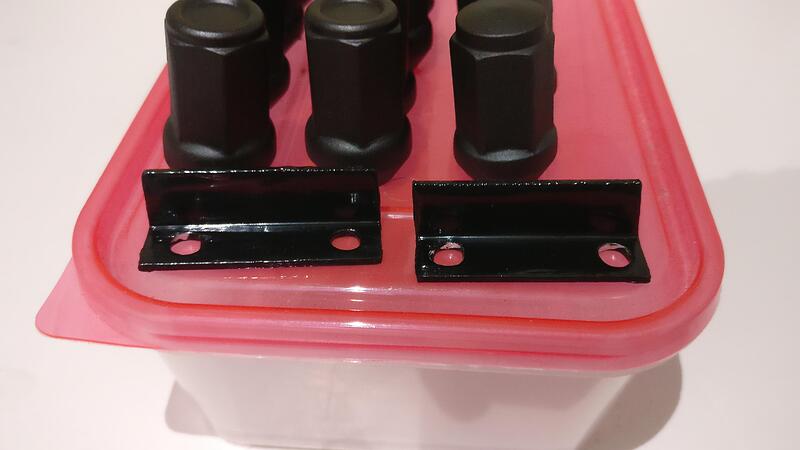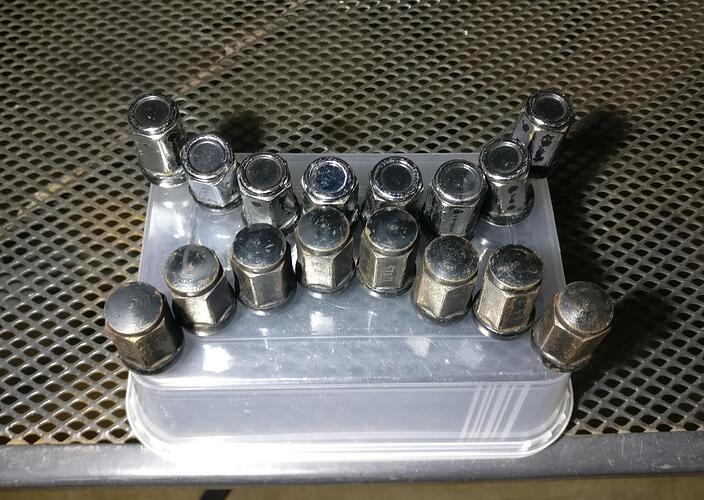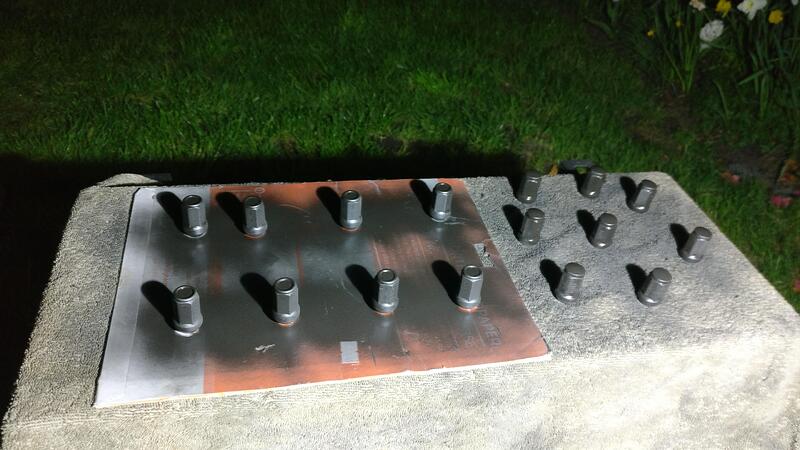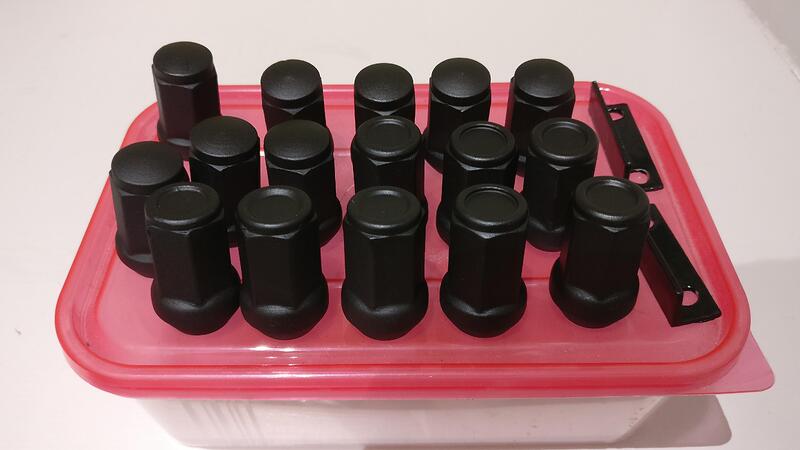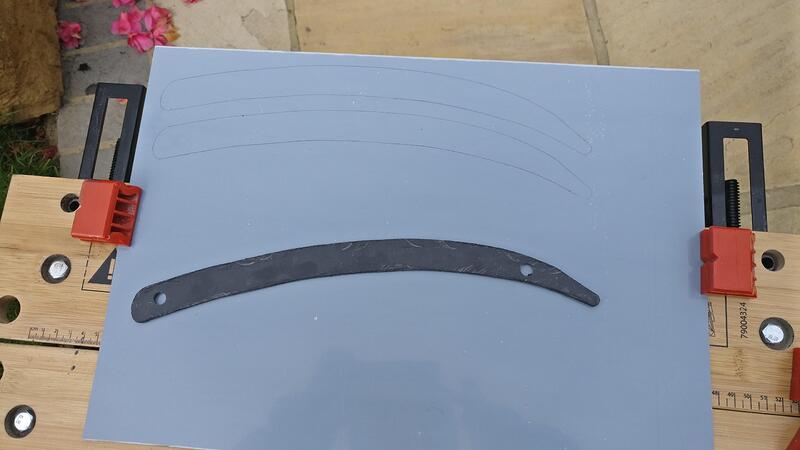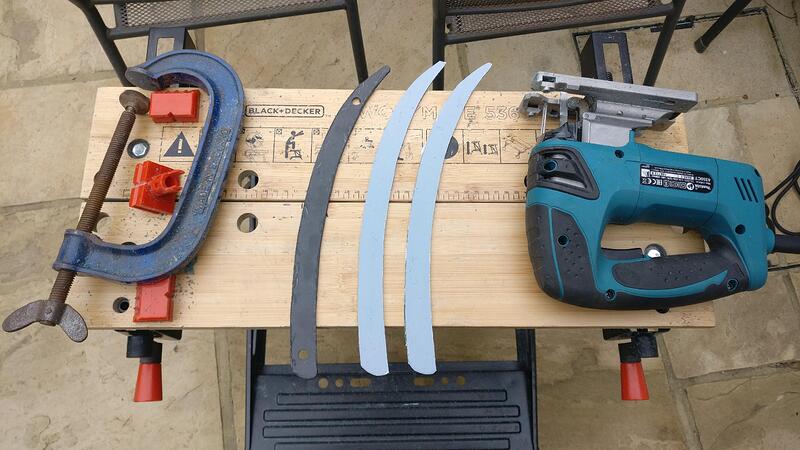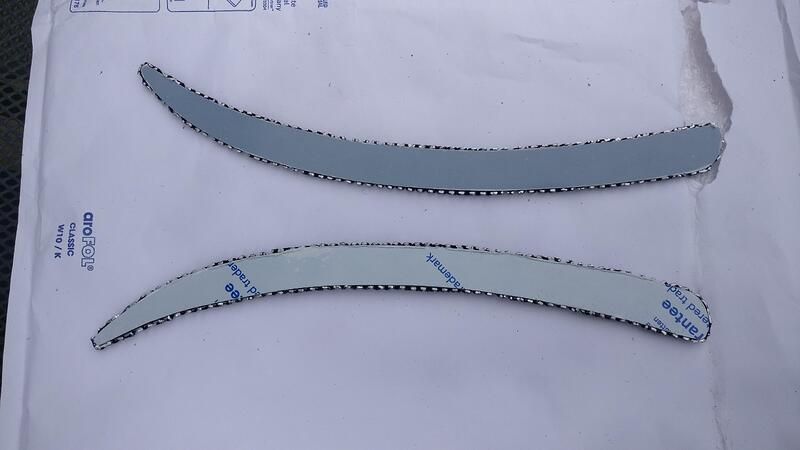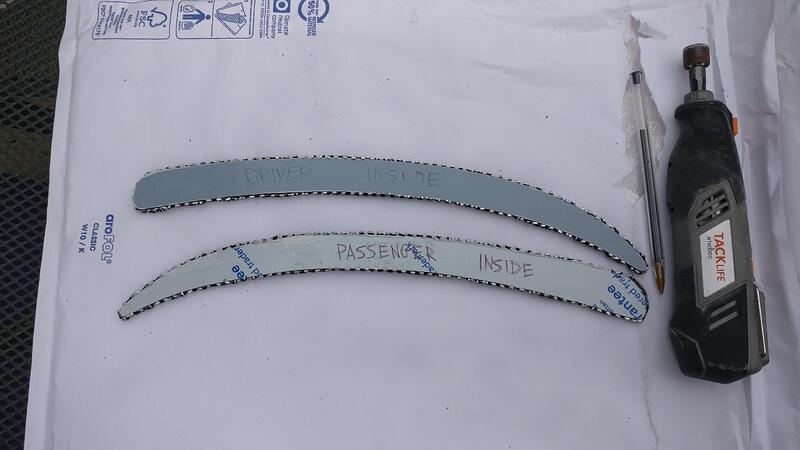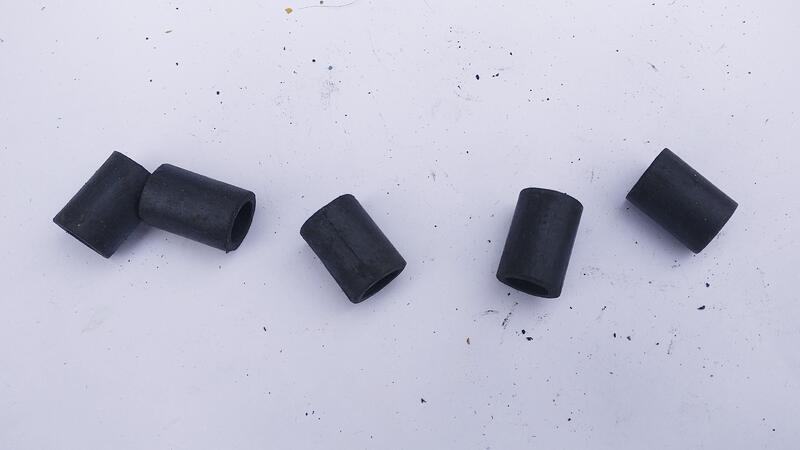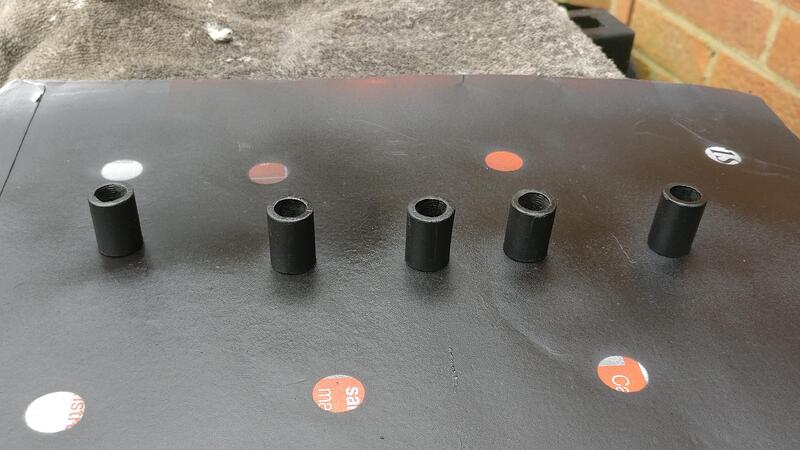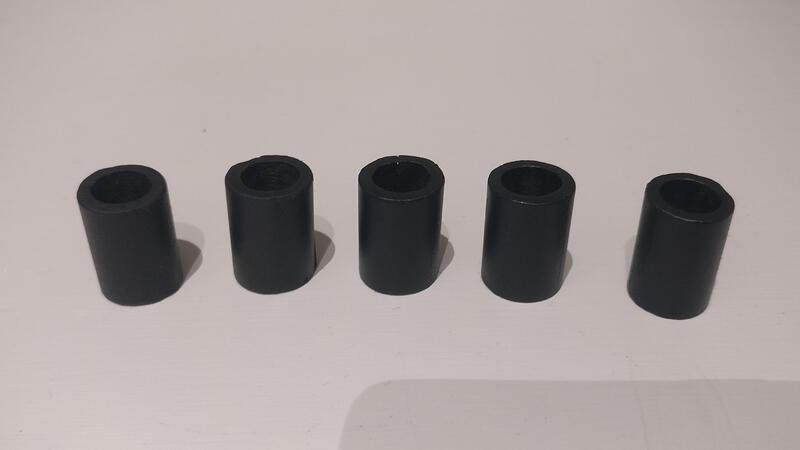No matter what I tried I couldn’t get the passenger wing mirror plinth off. 2 of the 3 fixing bolts just kept spinning, so I had to resort to cutting it off.
I took out the one bolt that wasn’t spinning and took my hacksaw to the plinth. I began sawing as close to the door as reasonably possible to ensure I went through the bolt and not have to cut twice.
The first bolt came out easy enough, but the second was a bit more of a pain. I cut down in a very similar angle to the first bolt, getting as far down as I dared to avoid cutting into the door. I positioned a towel to help protect the door.
Once I couldn’t saw any more, I gave the plinth a wiggle but it was still stuck. I flipped the door on its side and cut again to hopefully meet the other groove.
As you can see here, the second cut was the one that actually cut the bolts, but I think I still needed to do both cuts anyway.
I couldn’t quite twist the remaining plinth piece off, so I took my dremel and ground around the stuck bolt to help release the tension. The piece eventually came off and I was left with the bolt and captive nut.
The only way I was going to get the bolt out was to drill it, so I cut the bolt to give a flat surface to drill into. I used tape on the door to help protect from the dremel.
The bolt was quite soft so drilled out pretty easily. Finally the door was ready to sand.
I could have left the plinth on the door and sprayed up and around it as best as possible, but the finish would have been sub optimal. It was a shame to have to destroy a discontinued item (Deroure says discontinued anyway), but I put the quality of the spray job as priority.
Here are the remains of the wing mirror plinth. Many of the bolts were very rusty after 23 years of rain seeping between the gaps. Glad it is off and I have spares to replace it.
When pulling off the outer window trims some rubber and adhesive was left. I’ve bought some new trims so I needed to clean off all the remaining adhesive etc. I took a flathead screwdriver and scraped the majority of it off. I then took some sandpaper and ground off the remaining crap.
Clean surfaces ready for the new trims. I was able to pull off the inner trims ok so planning to reuse them.
The inside of the doors are pretty complex so took a fair while to sand and key, pretty fiddly and frustrating at times. I sanded with 320 grit just to key the surfaces ready for primer.
The outside of the doors are fairly stone chipped. I blame this on the cars age and amount of trackdays (and not the fact it went into the Donnington gravel twice in one day ![]() )
)
I did still take the 320 to this side of the doors and will ask if the body shop can primer over them to fill the low spots. If not I’ll get them to go over the outer side of the doors with the machine like with the sills to get rid of the chips.
The doors are pretty gutted but I left the front window runners in the shells as I couldn’t figure out how to get them out after taking out the fixing screw behind the rubber insert. I didn’t want to force anything so put the screw back and just taped the runner instead.
Doors are now done my end.
